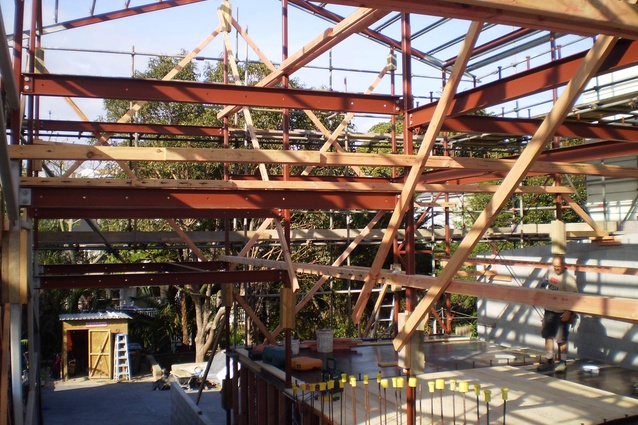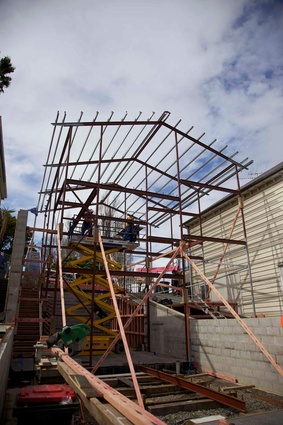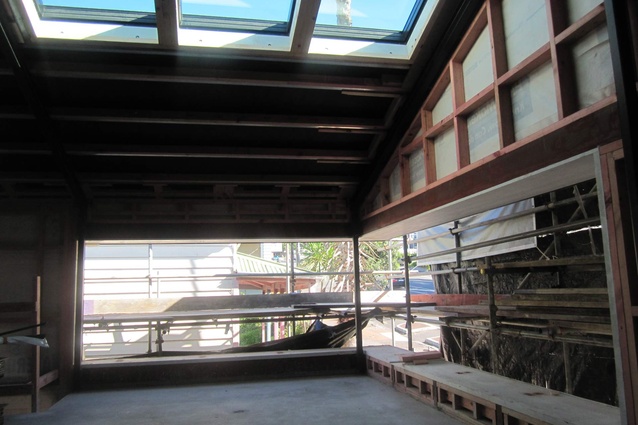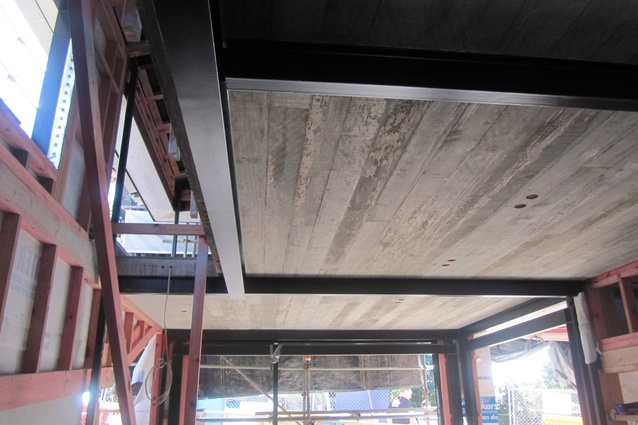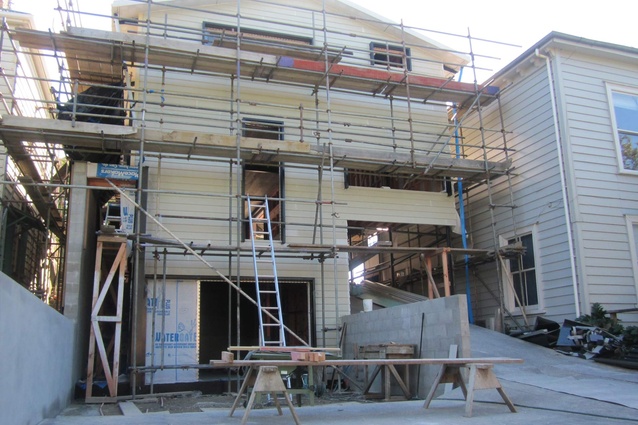College Hill Project Nears Completion
Being only a month or so from completion at College Hill there is currently huge stress equaled only by excitement. The joy of creation has worked its positive energy on the tumultuous process in achieving our construction, and the many ideas and ideals considered and put into place during the design and documentation phases are now able to be tangibly experienced.
The photos in the slideshow illustrate the internal steel skeleton (described in previous blogs) of the building going up, along with certain details of construction such as the rough saw form work used to create the concrete ceilings, the steel brace frames bordering the main joinery units, and the boxed out window frames punching through the exterior cladding.
Throughout the build this project has continued to evolve and refine itself ensuring all decisions are given due consideration and the finished product is everything it can be. Involving an architect on site during the construction stage (although crucial for any project to reach its full potential) is something that does not always happen. Having the ability to audit and provide quality assurance that each space is being built as envisioned and as specified is a process which benefits all involved. Who better to ensure this process than the designer?
For us this is the end of a four year process, and as we have the completion date in view, we reflect on the process and what we have achieved. In many ways the built environment is the embodiment of human endeavour, evolving with us, sometimes very well and sometimes not so well. This is one of the many ponderings we have as architects, and the thoughts that keep us awake at night. Do we want to create a space that fulfils the basic requirements, or do we want to create something of significance for all?
As an idea, evolution illustrates the connection between specific environments and the inhabiting species both physically and behaviourally. This relationship between habitat and inhabitant has developed logically so as to be suited to the specific circumstance, an arctic fox would not survive well in the Sahara Desert, and a whale would be out of place in any other surrounds than that of large expanses of water.
New Zealand has its own specific environment, climate, sunlight, and culture. These realities should be reflected in the structures we create, and if the analogy of evolution is to be considered, ignoring these realities will create obsolete built situations.
Alongside the idea of physical evolution a psychologically adaptation naturally occurs. The connection between ones physical environment is integrally connected with ones mental being, in turn creating a link between how and where we live to who and what we are. To construct is a massive responsibility.
Some of the background: This story follows a construction project on College Hill designed by Jonathan Smith from Matter, an Auckland-based architecture firm. As well as seeing the project take shape, Smith has discussed the issues around blanket restrictions placed on sites throughout Auckland, how this affects developments in Auckland, the community, and the ordeal of working with council to obtain approval for a development with integrity. We’ll also see a cool building at the end of it. If you missed the first article in the series, click here.

